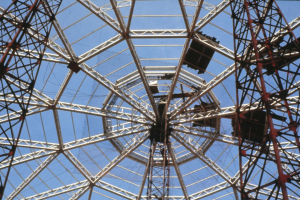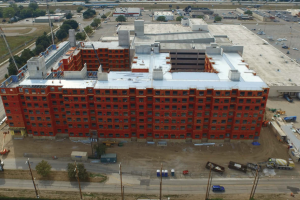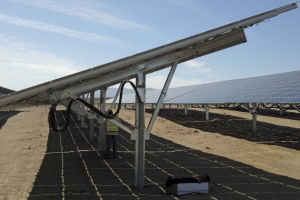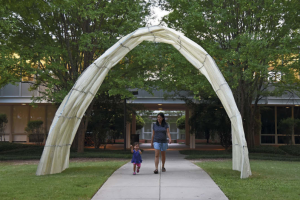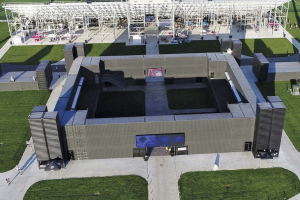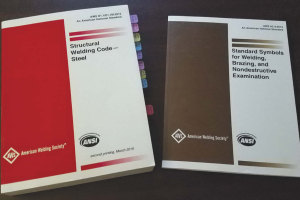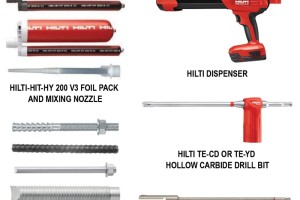Since the inception of the sports, football and baseball fans have been subjected to a wide range of weather conditions ranging from rain, sleet, and snow to hot and humid weather in an open-air environment to watch their favorite teams compete.
…Review Category : Articles
CFS Load-Bearing Prefabricated Panels
Off-site construction is the future of the building industry. It aims to speed up on-site construction schedules, address skilled worker shortages, and achieve better pre-coordination. Given their lightweight nature, cold-formed steel (CFS) framing projects are uniquely situated to use prefabricated panels. The panels can be complete with all the framing, sheathing, and possibly finishes installed in the fabrication facility.
…ASCE/SEI Solar PV Structures Committee Manual of Practice
As the energy market transitions towards having a larger renewable energy component, the solar energy industry has experienced fastpaced growth. In particular, the solar photovoltaic (PV) industry has grown rapidly over the last decade, which has presented numerous challenges. One significant growing pain has been the lack of design guidance on solar PV structures from the building codes. The building code (referred to herein as the “Code”) is typically some version of the state building code based on the International Building Code (IBC) as adopted by the local Authority Having Jurisdiction (AHJ).
…Folding is a systematic method that transforms planar material into threedimensional geometries with structural depth. Through precise calibration, flexible folded hinges can become rigid – capable of with- standing structural loads. Depending on the organization of folds, structures can be flatpacked for ease of transport. Folding can also potentially reduce production costs associated with the complexity of manufacturing parts that have Gaussian curvature. By beginning with a simple flat plane and then folding it, there is the possibility to fabricate geometries that are globally doubly curved but locally developable. Additionally, there are numerous variations possible with one systematic method.
…What Structural Engineers Need to Know
It is a shame that many cargo containers are lying around harbors all over the world and, in other places, rusting and wasting away. Would it not be nice to give these very strong structures new life?
…In the December 2023 issue of STRUCTURE (Stop Trying to Out Recruit the Competition), Anthony LoCicero discussed the current high demand for engineers, and the challenges firms nationwide, large and small, are having with recruitment and retention. In addition, he offered a unique perspective on hiring, namely, looking for candidates that do not fit the typical profile. In this article, I address the hiring issue from a more traditional perspective: hiring recent graduates educated in U.S. university engineering programs. I present my recent experiences and what I believe needs to be done.
…Welding is a fundamental part of steel construction, but correct performance at the steel fabricator’s shop and the project site requires effective communication of what’s expected. Following are some common mistaken assumptions on structural drawings regarding welding symbols. While most engineers are aware of the American Welding Society’s (AWS) D1.1, Structural Welding Code – Steel, many may not be aware that AWS produces a formal standard for welding symbols: A2.4 – Standard Symbols for Welding, Brazing, and Nondestructive Examination (Figure 1). When in doubt, this thoroughly illustrated reference is an excellent resource.
…Congratulations! The fact that you’re reading STRUCTURE means that you’re already a member of a structural engineering organization (CASE, NCSEA or SEI). But are you really getting your money’s worth? If you’re not actively involved, you’re not truly leveraging the value of your membership.
…Many of us may not remember much of what we learned during our college years in an engineering program. Some of the coursework likely directly impacts our day-to-day engineering career while much of it does not. However, after a few short days and weeks on the job and continuing for years, we all realize that there is much about a successful career as a consulting structural engineer that is not taught in school at all. Passing this critical on-the-job training (OJT) to younger staff, so our firms can continue to prosper and grow into the future, is no small task. This training typically happens in the day-to-day trenches of project management, but lessons learned should be shared with all staff on a regular basis so all can benefit. Discussing and sharing hard and soft skills, failures, and successes are extremely valuable in developing younger engineers.
…Designing For Yield Based on Anchoring-to-Concrete Provisions
The American Concrete Institute (ACI) standard ACI 318, Building Code Requirements for Structural Concrete, includes provisions to design cast-in reinforcing bars for development, i.e., embedding a bar deep enough to develop the yield strength without splitting failure occurring. Splitting failure refers to cracking and splitting in the concrete around bars in tension. Post-installed reinforcing bars have typically been designed using ACI 318 anchoring-to-concrete provisions, which consider various possible anchor failure modes rather than designing the bars to yield. This article expands the discussion of a design concept introduced in an ACI Structural Journal article by Charney et al. in which anchoring-to-concrete provisions could be used to design post-installed reinforcing bars specifically for yielding.
…
